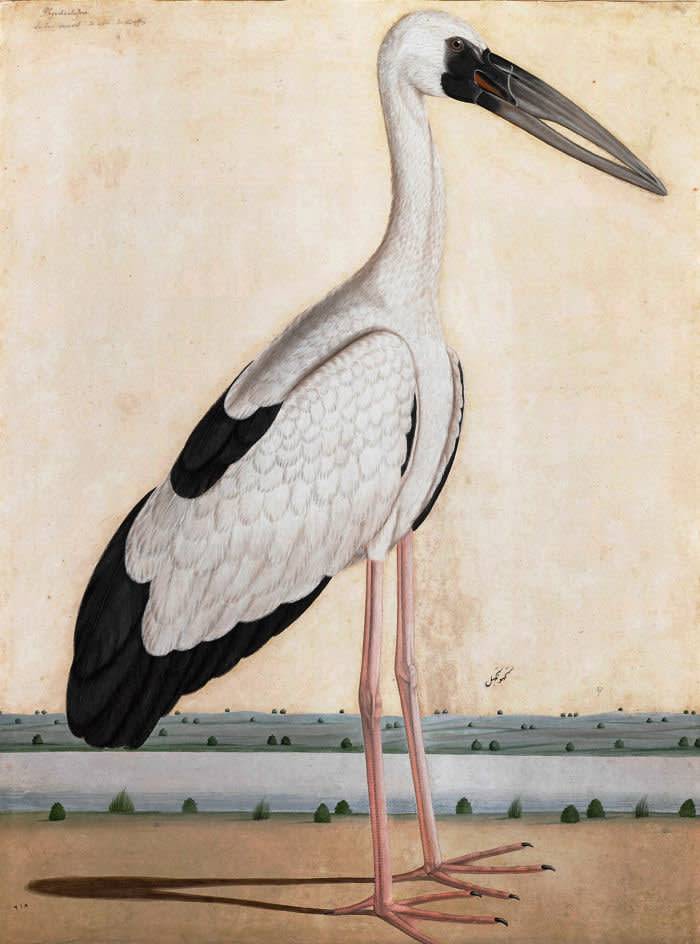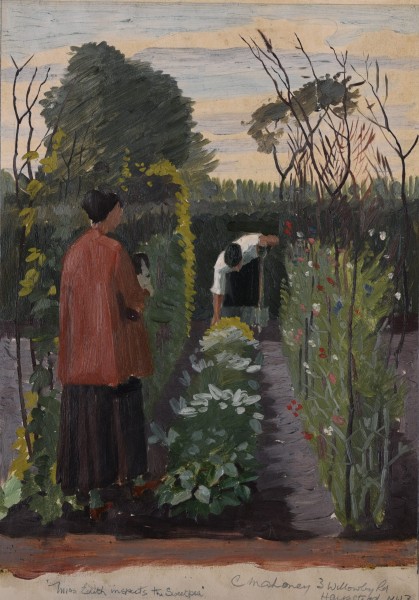
The majority of the Indian watercolours are wildlife and plants, and although these are superb in many ways they are the least interesting. But this is magnificent.


The majority of the Indian watercolours are wildlife and plants, and although these are superb in many ways they are the least interesting. But this is magnificent.


We mentioned the Indian Watercolours exhibition at the Wallace Collection on the Letter. And although a visit is memorable, probably essential for anyone who’s ever been to India, the catalogue is superb and would make a wonderful present. This is our favourite painting: it’s an ‘artist portrait’ c 1832-5. The catalogue says: ‘it brings us closer than any other surviving evidence to the way the forgotten Indian masters celebrated in the exhibition actually worked.’ This is an understatement: you feel you are there, you understand how they worked, this (presumably self) portrait illuminates every single watercolour in the show. Every detail is perfect and unforgettable, from the paint boxes to his glasses to the cushion behind his back.


And the real star of the show – Evelyn Dunbar. This is Strawberry Cottage, it’s undated but presumably 1950s.


Margaret L Duncan (1906-79) painted Reigate and its Environments in the late 1930s: an extraordinary painting but another ‘hidden life’.


Our favourite Harry Bush: this is Snowfall in the Suburbs, A View from the Artist’s House. 1940. The Liss catalogue (available free in the shop where we have our own small ‘Sanctuary’ exhibition) says: ‘Bush saw the ancestry of his art in the quiet dignity of Dutch and Flemish domestic scenes. His paintings so obviously mirror the ordinary world we see around us in the U.K (the houses are very specific to England – even London suburbia). His gift is to take that ‘reality’ beyond the immediate to something still and satisfying, yet still rooted in and expressed through, the everyday.’ Just like a novelist.


Few readers of the Post will be unsurprised if we say that this is our favourite painting in the exhibition! It’s by Charles Mahoney (1903-1968) and it’s called ‘Miss Edith inspects the Sweetpeas’. It’s c. 1934 and makes one think of Miss Ranskill Comes Home or Miss Buncle’s Book or The Call (except her smock was blue), oh several of our books involving formidable women who, naturally, have gardeners, who love sweet peas, who scrape their hair into a kind of black beanie, who are characterful and, one senses, kind. Also isn’t she carrying a small black and white dog?


Sanctuary: Artist-Gardeners 1919-39 is a selling exhibition that has opened at the Garden Museum. It has been curated by Liss Llewellyn and is accompanied by another (small) selling exhibition in the shop (we have temporarily removed the Stendig calendar and the Shell poster used on the front of the Classic edition of Miss Pettigrew). There is a catalogue published on the occasion of the exhibition which is free for visitors to the shop (£15 at the Garden Museum). Here is the cover. It’s Charles Mahoney’s The Garden 1950.


And everybody’s favourite: snowdrops, which we have had in the shop but only once and they obviously only lasted a few glorious days. But we remember them.


Daffodils! Always in the shop at this time of year, but for their glorious yellow not their scent. An unmistakeable and unmissable part of spring.


Tulips will be forever associated with Jane Brocket – with her erstwhile blog, with her Instagram ‘feed’ and with several other places. She now has an allotment which will soon be a bower of tulip bliss and we had planned a trip to Holland together at the end of April but this may now be on hold because of world events. But in any case she planted the tulips in our window boxes in Lamb’s Conduit and they will be up soon: a tribute to Jane’s fantastic eye, her (fifteen or is it eighteen books), her embroidery, quilting, knitting, cooking and gardening – cf. her first book about the domestic arts which we still consult, often. (We met Jane because of Persephone. She would come in to the shop and one day she said, I am going to start a blog. ‘What is a blog?’ we said. Now her daughter Phoebe is advising us on the successes and failures of our website and what to change when we have a rebuild in the summer!)